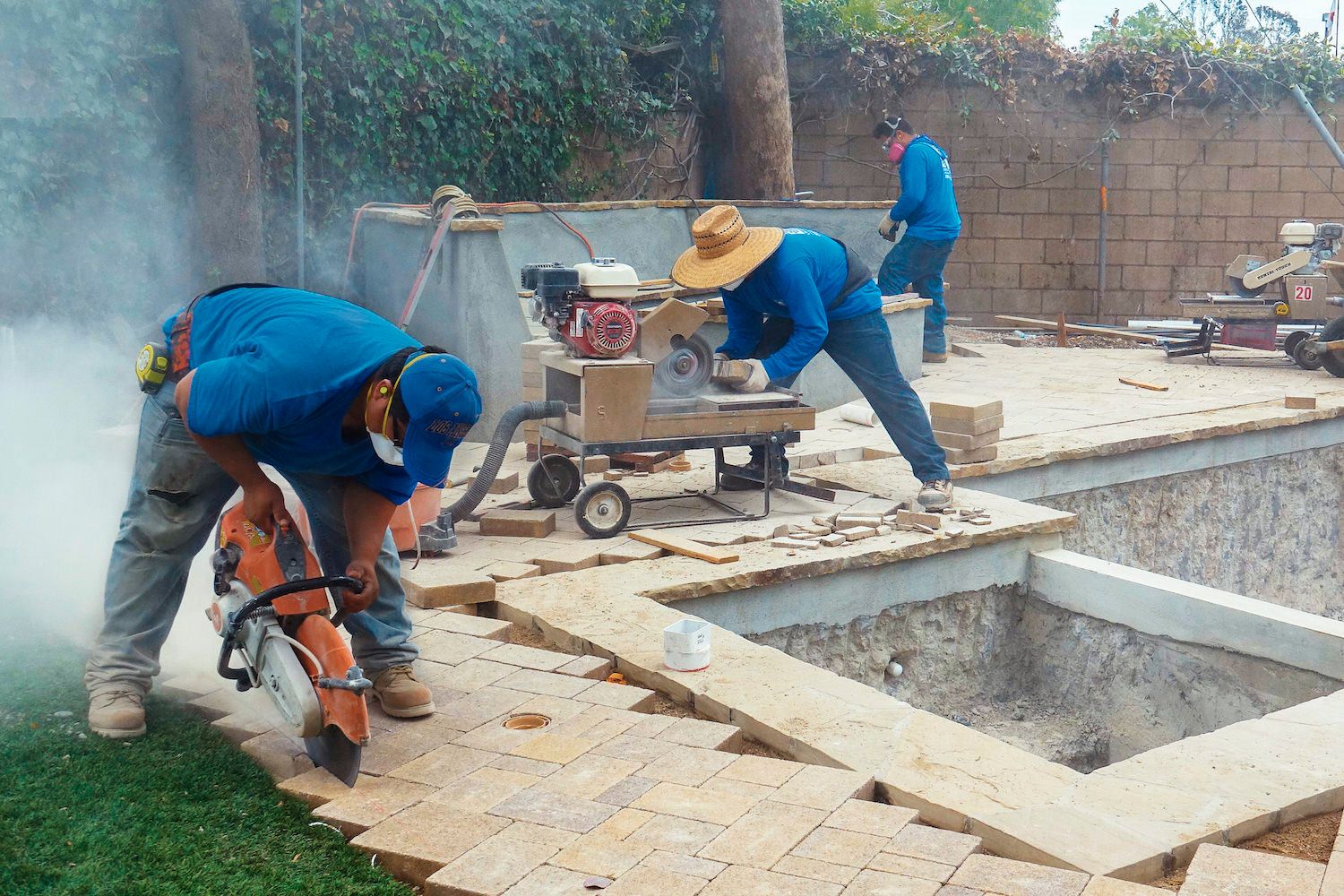
Paver Installation Crew: A Comprehensive Guide
Introduction
Pavers, also known as interlocking concrete pavements (ICPs), have become increasingly popular for both residential and commercial applications due to their durability, versatility, and aesthetic appeal. Installing pavers requires specialized skills and knowledge, making it essential to hire an experienced paver installation crew. This guide provides a comprehensive overview of the process involved in hiring and managing a paver installation crew, ensuring a successful and satisfactory outcome.
Hiring a Paver Installation Crew
Qualifications and Experience
When hiring a paver installation crew, it is crucial to assess their qualifications and experience. Look for crews that have:
- Relevant certifications: Industry-recognized certifications, such as the Interlocking Concrete Pavement Institute (ICPI) certification, demonstrate the crew’s expertise and adherence to industry standards.
- Years of experience: Experienced crews have a proven track record of successful paver installations and can anticipate and resolve potential challenges.
- Portfolio of completed projects: Request a portfolio of previous projects to evaluate the crew’s workmanship, attention to detail, and ability to meet diverse design requirements.
References and Insurance
Obtain references from previous clients to gauge the crew’s reliability, professionalism, and customer satisfaction. Additionally, ensure that the crew has adequate insurance coverage, including general liability and workers’ compensation, to protect against accidents or property damage.
Communication and Contract
Establish clear communication channels with the crew from the outset. Discuss the project details, timelines, and expectations thoroughly. Draft a written contract that outlines the scope of work, payment terms, and any warranties or guarantees.
Managing a Paver Installation Crew
Site Preparation
Prior to installation, the crew will prepare the site by:
- Excavating the area: Removing existing vegetation, soil, or debris to create a level and stable base.
- Compacting the subgrade: Using heavy machinery to compact the soil and create a solid foundation for the pavers.
- Installing a base layer: Spreading a layer of crushed stone or gravel to provide drainage and support.
Paver Installation
The crew will then install the pavers according to the specified design and pattern:
- Laying the pavers: Placing the pavers on the base layer in a staggered pattern to ensure stability and prevent movement.
- Compacting the pavers: Using a plate compactor to firmly set the pavers in place and create a smooth surface.
- Cutting and fitting: Utilizing specialized tools to cut and fit pavers around obstacles or to create custom designs.
Joint Sanding
After installation, the crew will fill the joints between the pavers with sand:
- Sweeping the sand: Spreading fine-grained sand over the surface of the pavers to fill the gaps.
- Compacting the sand: Using a vibrating plate compactor to settle the sand into the joints and lock the pavers in place.
- Repeating the process: Sweeping and compacting the sand multiple times until the joints are fully filled and stable.
Post-Installation Maintenance
To ensure the longevity and appearance of the paver installation, regular maintenance is essential:
- Sweeping and cleaning: Regularly sweeping the pavers to remove debris and prevent stains.
- Re-sanding: Over time, sand may settle or be washed away, requiring occasional re-sanding to maintain the stability of the joints.
- Sealing: Applying a penetrating sealer to the pavers can enhance their durability and resistance to staining and fading.
Troubleshooting Common Issues
During or after installation, certain issues may arise:
- Pavers shifting or sinking: Improper compaction or inadequate base preparation can cause pavers to move or sink.
- Cracked or broken pavers: Excessive weight or impact can damage pavers, requiring replacement.
- Weed growth in joints: Lack of proper joint sanding or the use of organic sand can promote weed growth.
- Efflorescence: Mineral deposits can appear on the surface of pavers due to moisture absorption and evaporation.
Conclusion
Hiring and managing a skilled paver installation crew is essential for a successful and visually appealing paver installation. By following the guidelines outlined in this guide, you can ensure that your project is completed to the highest standards and provides years of enjoyment and functionality.